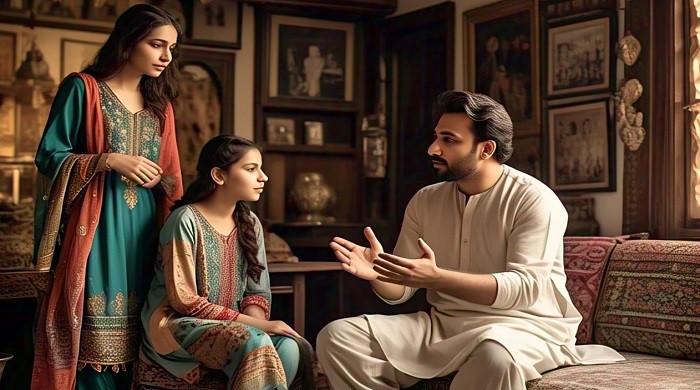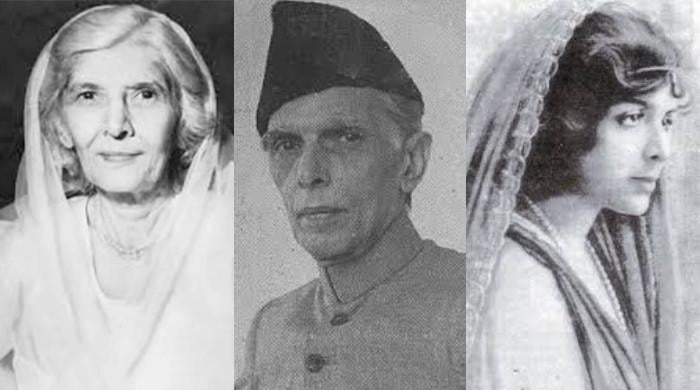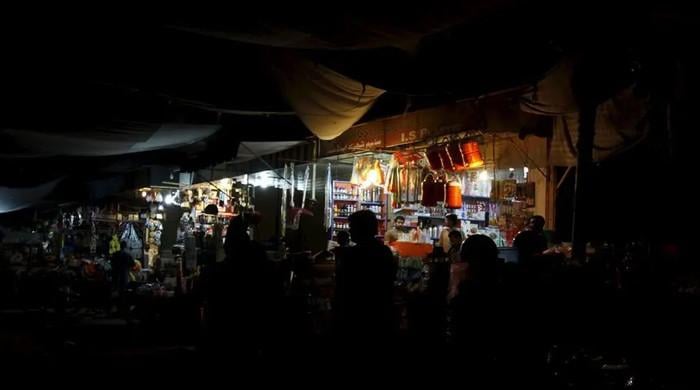Chai, why not? The brew that bonds a nation
"We serve garam chai to thousands of people and our taste is so great that customers keep coming back," says Abdul Qadir
November 06, 2024
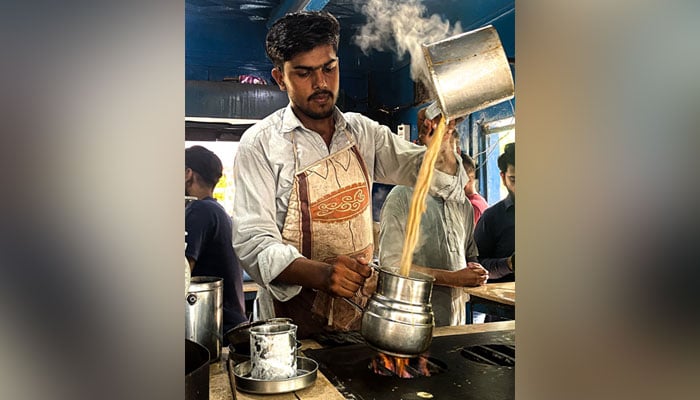
Every morning, as the sun rises, it brings a new story to the day—just as chai (tea) brings warmth and comfort to my life. My day begins with the sound of a chai pan heating on the stove, and I start thinking about how I can make it better. I still remember the day my father taught me to brew chai for the first time.
Chai is one of the most popular beverages globally, second only to water, with May 21 designated as International Tea Day by the United Nations.
The origins of tea are not precisely known, but it is thought to have originated in northeast India, northern Myanmar, and southwest China. Evidence suggests that tea was first discovered in China 5,000 years ago, making it one of the world’s oldest drinks.
In addition to its cultural significance, tea offers health benefits, including anti-inflammatory, antioxidant, and weight loss effects, contributing to overall wellness.
Tea culture in Pakistan
Every South Asian believes that “chai is an emotion,” and you truly feel it if you visit a chai dhaba (teashop) after sunrise. The lively chaos, the chatter, and boys calling out “ustaad, do cut lana” (two cuts — smaller than regular cups — of tea, please) all sync together in a familiar harmony of emotions when you step into any popular teashop, like the one at the University of Karachi.
In pursuit of learning more about how it works, I interviewed the team at ‘Khalil Bhai Chai’, a teashop, in Prem Gali at the University of Karachi. To my luck, I was able to convince Abdul Qadir, Khalil Bhai's right-hand man, to answer some questions. He has been working with Khalil Bhai, the proprietor of the teashop, since 2014.
“Thanks to our warmhearted atmosphere, people from different departments and even outside the university come to us for chai. Our specialties include doodh patti, normal chai, Kashmiri chai, elaichi chai, coffee (with and without milk), creamy chai, and chocolaty chai.
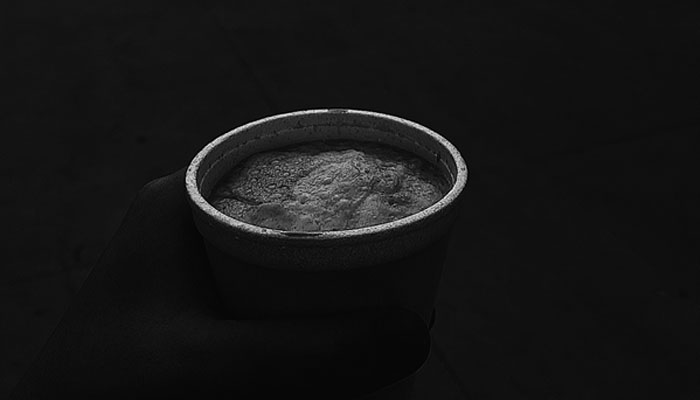
“Doodh patti is our best-seller, and we notice that girls come in for chai even more than boys every day,” shared Qadir, adding,” "We serve garam chai to thousands of people and our taste is so great that customers keep coming back."
Next to the teashop is a small garden where teachers and students gather after classes to enjoy chai together. Groups of friends from all departments and faculties come by every day, each ordering different kinds of chai according to their taste. The dhaba also offers parcel services and occasionally handles large orders within the university. Business is booming, and Khalil Bhai is expanding in terms of workforce as he has hired additional hands to manage the teashop operations.
“Tea is something that helps me relax and feel refreshed. Whether in the morning or evening, having tea is a routine that improves my day. After tea, I feel more energetic, and it takes away a bit of my tiredness,” said Eman Nawaz, a student from the University of Karachi.
My household helper shared her thoughts as well: “I have chai every morning with breakfast. It keeps me awake and helps me work better. I like my chai strong.”
A friend who’s addicted to chai expressed her view: “Sharing chai with others fosters connection and community. I like to enjoy it with my colleagues at the lunch table.”
Another friend, Dina, an artist in Karachi, talked about a special bond: “My amma and I love chai. She’s a working woman, and Saturdays are our time together since she has the day off. We always enjoy a cup of tea together, and those moments are my favorite. We chat about life and just enjoy each other’s company. I look forward to our conversations at the chai table every week. It makes me happy to share that time with her.”
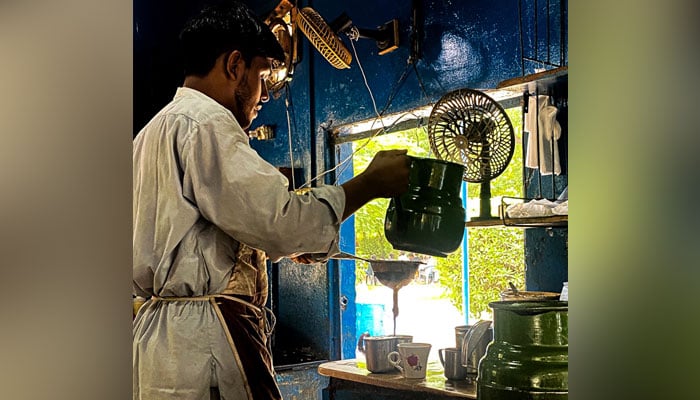
Mr Irfan from Karachi shared with me his very own tradition: “Every day at 11 pm, I go upstairs and chat with my older brother. We discuss various topics, often about the country’s affairs, ending on a positive note with a hot cup of tea. I wait all day for this time with him, and I cherish those moments.”
Sara Ali said, “The best time of the day starts when I have chai every evening with my husband. I share everything that happened in the day, and he does the same. It’s a time I treasure, and I save a lot of gossip to share.”
One of the most popular items served nationwide is lachha paratha (flaky, layered fried flatbread) with chai. Even if your mother makes brinjal for dinner, don’t worry—you can always grab chai and paratha from your favorite dhaba, and trust me, this combo tastes better than any fancy cuisine. The tradition of chai dhabas and cafés continues to thrive across Pakistan, offering places where family and friends can enjoy chai together. The atmosphere at these spots is often serene, with light music playing and groups of friends and families soaking up the simple pleasures of life. Canteens in universities, colleges, and other institutes also offer various kinds of chai and doodh patti, where students gather to talk, sing, and play games together.
From the bustling platforms of Rohri Station to the scenic Saif-ul-Malook Lake in northern Pakistan, chai has been a constant companion in our lives, enriching cultural connections and strengthening bonds of fulfillment.
In Pakistani culture, professional meetings and social gatherings often involve serving tea and often snacks, which brings people together and adds comfort and enjoyment to shared time.
The role of chai is not only limited to social gatherings as a hot beverage; it can also help boost energy during academic exams, hectic work schedules, and serve as a motivating factor before a job interview, a presentation, or any activity where presence of mind and is crucial for achieving desired results.
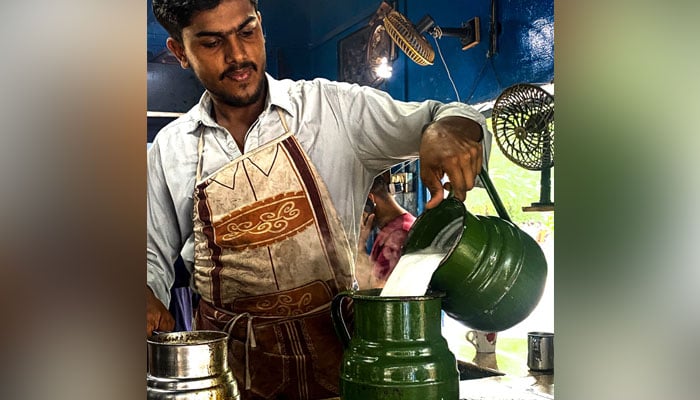
The jokes, giggles, and future plans are some of the highlights of a desi conversation over a loaded chai table.
According to the United Nations COMTRADE database on international trade, Pakistan, as one of the world’s largest tea importers, sourced more than $600 million worth of tea last year. Another statistic revealed that Pakistani citizens consumed a staggering $336 million worth of tea in just the first six months of 2024, according to a report published in The News. The Pakistan Bureau of Statistics (PBS) data showed that tea costing Rs31 billion was consumed in just two months (July and August) in 2023 across the country.
The style of making tea varies across regions. The four provinces have their own specialties when it comes to preparing chai. For instance, Karachi is famous for doodh patti (milky tea), while pink-coloured tea known as Kashmiri chai is popular in Punjab and Kashmir. Black and green teas are preferred by health-conscious individuals and are also consumed for weight loss.
You already know the bliss of chai and its richness. Now, let’s share some flavorful combos that you need to try if you are an avid chai lover.
- Aaloo samosa with chai
- Halwa puri with chai
- Chai and rusk
- Butter on bread and chai
- Fries with chai
- Nimco with chai
- Brownies with chai
- Cheese naan with chai
- Nutella paratha with chai
- Andaa paratha with chai
Pakistani culture is so vibrant, and the flavour of chai makes it even more so. Every household has a unique story and brews chai in different ways, creating a variety of colours. I love seeing how chai fascinates people every day. I am always trying to explore a different recipe for chai and make some memories while brewing. From beach parties and beating the cold weather in December to the rush at the railway stations, chai always comes first for everyone.
The writer is student of social sciences at the University of Karachi.




